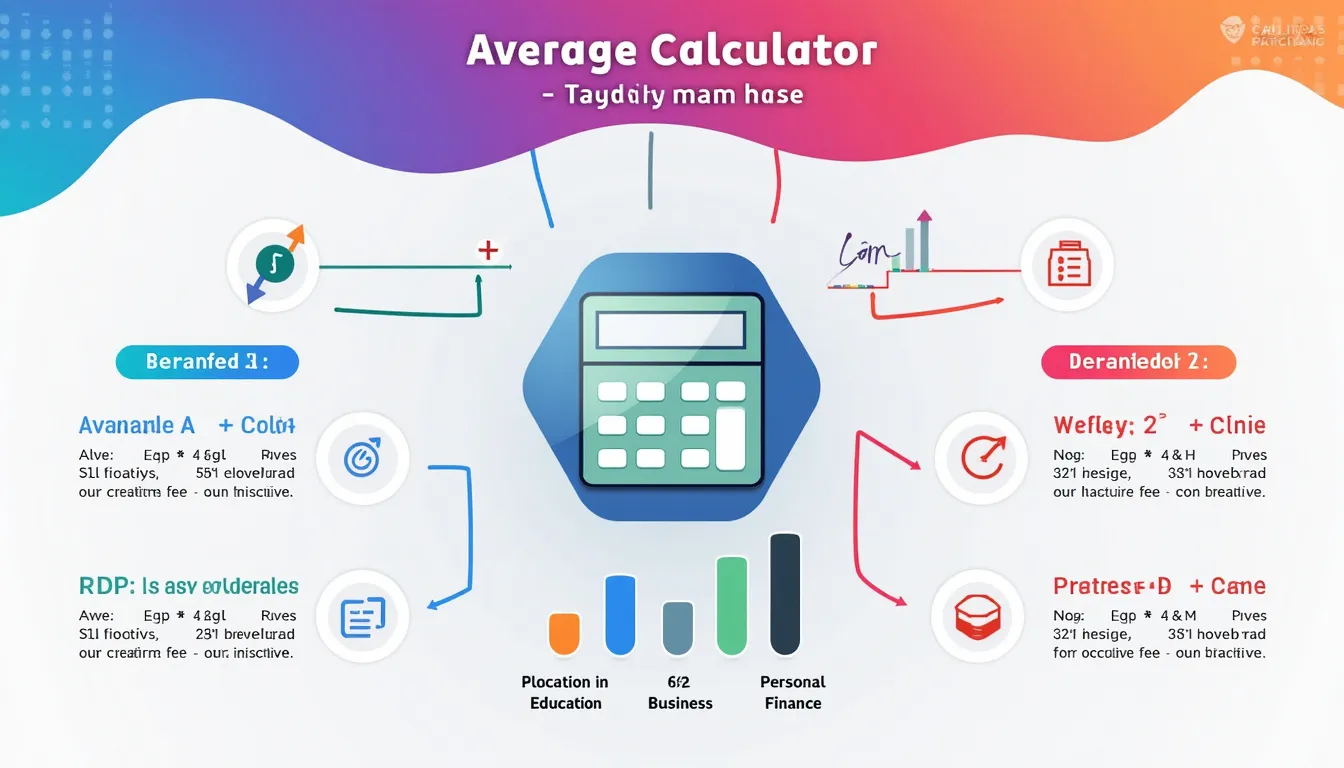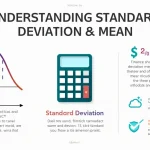Average Calculator
Is this tool helpful?
How to use the tool
- Enter your numbers. Separate them with commas, spaces or new lines.
Example A: 3, 9, 27, 81
Example B: 5 10 15 20 25 - Select “Calculate Average.” The script adds every value and counts how many you gave.
- Read the results. You see Sum, Count, Average rounded to two decimals. Change any entry and recalculate instantly.
Formula used
$$\bar{x}= rac{\sum_{i=1}^{n}x_i}{n}$$ (ISO 3534-1, 2006)
Example calculations
- 3, 9, 27, 81 → Sum = 120, Count = 4, Average = 30.00
- 5, 10, 15, 20, 25 → Sum = 75, Count = 5, Average = 15.00
Quick-Facts
- The calculator accepts up to 4,294,967,295 entries—the JavaScript array limit (MDN, 2023).
- Arithmetic mean is defined in ISO 3534-1, the global statistics vocabulary (ISO, 2006).
- Financial reports round to two decimals under IFRS 9 guidance (IFRS, 2019).
- Average daily prices underpin the U.S. Consumer Price Index (BLS, 2022).
FAQ
What is the arithmetic mean?
The arithmetic mean is the sum of values divided by their count (Khan Academy, https://www.khanacademy.org/math).
Why use an online average calculator?
It removes manual math errors and handles large datasets instantly (NIST e-Handbook, 2023).
Which separators are allowed?
You may use commas, spaces, tabs or line breaks; the script splits on all of them.
How many numbers can I enter?
You can enter up to 4.29 billion values, the technical limit for JavaScript arrays (MDN, 2023).
How precise is the result?
The tool works in 64-bit floating-point, giving about 15 decimal digits precision (IEEE 754-2008).
Can I calculate a weighted average here?
No. This version calculates only simple means. Use a separate weighted-average tool for weights.
Does the calculator store my data?
All computation happens in your browser; no numbers leave your device.
How do I copy the results?
Select the result text with your cursor, press Ctrl + C or ⌘ + C, and paste anywhere.
Important Disclaimer
The calculations, results, and content provided by our tools are not guaranteed to be accurate, complete, or reliable. Users are responsible for verifying and interpreting the results. Our content and tools may contain errors, biases, or inconsistencies. Do not enter personal data, sensitive information, or personally identifiable information in our web forms or tools. Such data entry violates our terms of service and may result in unauthorized disclosure to third parties. We reserve the right to save inputs and outputs from our tools for the purposes of error debugging, bias identification, and performance improvement. External companies providing AI models used in our tools may also save and process data in accordance with their own policies. By using our tools, you consent to this data collection and processing. We reserve the right to limit the usage of our tools based on current usability factors.







